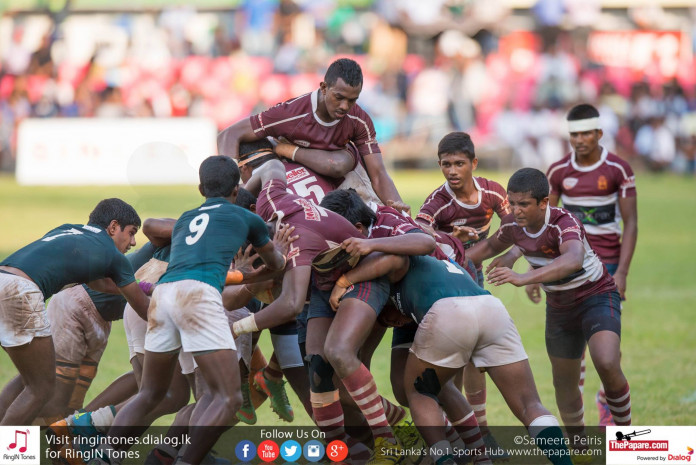The sun melting into the Indian Ocean, the rain falling during the monsoon season and a driving maul from an attacking line out, all three forces of nature seem unstoppable at the time but there are ways rugby coaches have of stopping the last of this trio while marveling at the setting sun and the deluge.
Let’s first look at a driving maul as the law defines it.
A maul begins when a player carrying the ball is held by one or more opponents, and one or more of the ball carrier’s teammates bind on to him. Therefore we have at least three players all on their feet; the ball carrier and one player from each team. All the players involved must be caught in, or bound to, the maul and must be on their feet and moving towards a goal line. Open play has ended.
The first area a defending coach can look at is to not oppose the ball carrier and thereby not form a maul. This means the ball is in open play and a defender can attack the ball carrier from the opposition’s goal line. Once we have a man in on the ball we will have the advantage.
The other option when we don’t oppose the ball carrier is to wait for the attacking team to transfer the ball behind the front blocking players and thereby causing an obstruction which results in a penalty to the defending team.
Both of those options are dangerous, can only be used sparingly and are also a hard to sell to a warrior forward pack who wants to compete on all fronts. If these tactics go wrong or are mistimed then all involved end up with egg on their faces. If the defending team is to compete, is it going to be in the air or on the ground? If the defenders are confident they can win the ball in the air, or at least disrupt the service, then it will put pressure on the attacking thrower, lifters and jumpers to be accurate with their skill execution. The coach can do his homework and give his line out team a good indication on whether they will be competitive in the air and the leaders can see on the day if the attacking line out is functioning successfully. If the team has decided to compete on the ground against the driving maul then there are a couple of options here to consider. To sack the jumper when he hits the ground so the ball carrier isn’t on his feet and therefore it is not a maul. A team can also look to disrupt the lifters who become the forward blockers once the jumper has been returned to earth. The back lifter has the greater challenge of the two lifters in transforming into a blocker therefore he is our target. His arms are straight and his hands high on the jumper’s rump during the lift making him the slower of the two.
These options are aimed at letting the attackers have the ball and then preventing them from setting up their maul. Now if none of those measures above have worked, and the attacking maul is set up, then we can drive the attackers over the sideline by using an off centered defensive drive coming from the back of the line out to the front. Or we can halt their forward progress for five seconds so the referee will call for the attacking team to use the ball.
Obviously there is more depth to all of the above options. These include body height, timing, communication, knowledge of the opposition, confidence, specific skill sets, body types and more that effect which option suits your team best. Like sunsets and monsoons all driving mauls are unique so to appreciate the drama and beauty of this spectacle your team needs to arrive prepared for all scenarios.




















